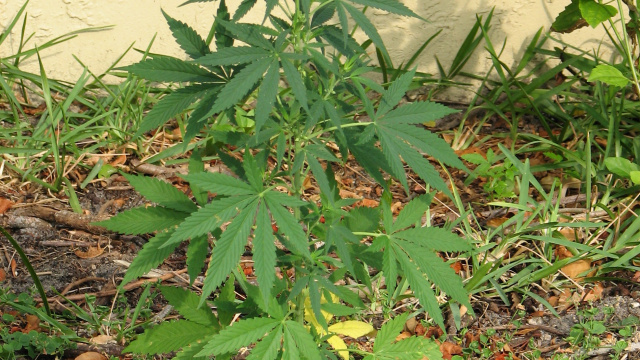 It took the death of a small, rare member of the weasel family to focus the attention of Northern California’s marijuana growers on the impact that their huge and expanding activities were having on the environment.
It took the death of a small, rare member of the weasel family to focus the attention of Northern California’s marijuana growers on the impact that their huge and expanding activities were having on the environment.
The animal, a Pacific fisher, had been poisoned by an anticoagulant in rat poisons like d-Con. Since then, six other poisoned fishers have been found. Two endangered spotted owls tested positive. Mourad W. Gabriel, a scientist at the University of California, Davis, concluded that the contamination began when marijuana growers in deep forests spread d-Con to protect their plants from wood rats.
That news has helped growers acknowledge, reluctantly, what their antagonists in law enforcement have long maintained: like industrial logging before it, the booming business of marijuana is a threat to forests whose looming dark redwoods preside over vibrant ecosystems.
Hilltops have been leveled to make room for the crop. Bulldozers start landslides on erosion-prone mountainsides. Road and dam construction clogs some streams with dislodged soil. Others are bled dry by diversions. Little water is left for salmon whose populations have been decimated by logging.
And local and state jurisdictions’ ability to deal with the problem has been hobbled by, among other things, the drug’s murky legal status. It is approved by the state for medical uses but still illegal under federal law, leading to a patchwork of growers. Some operate within state rules, while others operate totally outside the law.
The environmental damage may not be as extensive as that caused by the 19th-century diking of the Humboldt estuary here, or 20th-century clear-cut logging, but the romantic outlaw drug has become a destructive juggernaut, experts agree.
“In my career I’ve never seen anything like this,” said Stormer Feiler, a scientist with California’s North Coast Regional Water Quality Control Board. “Since 2007 the amount of unregulated activities has exploded.” He added, “They are grading the mountaintops now, so it affects the whole watershed below.”
Scott Bauer, of the state Department of Fish and Wildlife, said, “I went out on a site yesterday where there was an active water diversion providing water to 15 different groups of people or individuals,” many of them growers. “The stream is going to dry up this year.”
While it is hard to find data on such an industry, Anthony Silvaggio, a sociology lecturer at Humboldt State University, pointed to anecdotal evidence in a Google Earth virtual “flyover” he made of the industrial farm plots and the damage they cause. The video was later enhanced and distributed by Mother Jones magazine.
Brad Job’s territory as a federal Bureau of Land Management officer includes public lands favored, he said, by Mexican drug cartels whose environmental practices are the most destructive. “The watershed was already lying on the ground bleeding,” Mr. Job said. “The people who divert water in the summer are kicking it in the stomach.”
That water is crucial to restoring local runs of imperiled Coho salmon, Chinook salmon and steelhead, which swam up Eel River tributaries by the tens of thousands before the logging era. Scott Greacen, executive director of Friends of the Eel River, said, “It’s not weed that drove the Coho to the brink of extinction, but it may kick it over the edge.” By various estimates, each plant needs at least one gallon and as much as six gallons of water during a season.
The idea that the counterculture’s crop of choice is bad for the environment has gone down hard here. Marijuana is an economic staple, particularly in Humboldt County’s rural southern end, called SoHum. Jennifer Budwig, the vice president of a local bank, estimated last year that marijuana infused more than $415 million into the county’s annual economic activity, one-quarter of the total.
For the professed hippies who moved here decades ago, marijuana farming combines defiance of society’s strictures, shared communal values and a steady income. “Marijuana has had a framework that started in the 1930s with jazz musicians,” said Gregg Gold, a psychology professor at Humboldt State University. “It’s a cultural icon of resistance to authority.”
“In 2013,” he added, “you’re asking that we reframe it in people’s minds as just another agribusiness. That’s a huge shift.”
It is a thriving agribusiness. Derek Roy, a special agent enforcing endangered species protections for the National Marine Fisheries Service, said, “These grow sites continue to get larger and larger.” Things took off after 1996, when California decriminalized the use of medical marijuana, Mr. Roy said.
The older farmers say that as the fierce antidrug campaigns waned and the medical marijuana market developed, newcomers arrived eager to cash in, particularly in the past decade, according to two growers who spoke on the condition of anonymity.
“There is a gold rush,” Mr. Greacen said. “And it’s a race to the bottom in terms of environmental impacts.”
Now that Colorado and Washington voters have approved the recreational use of the drug, there is a widespread belief that the days of high prices for marijuana are nearly over.
As Mikal Jakubal, a resident of SoHum who is directing a documentary film about Humboldt County’s marijuana business, puts it, “Everyone thinks, ‘This might be the last good year.’ ” That helps fuel the willy-nilly expansion of cultivation, the tearing up of hillsides and the diversions that dry out creeks.
The worst damage is on public lands. There, extensive plantings are surrounded by d-Con-laced tuna and sardine cans placed around perimeters by the dozens, Dr. Gabriel said. Mr. Job of the land management bureau said these illegal operations have 70,000 to 100,000 plants; they are believed to be the work of Mexican drug cartels.
But small farmers have an impact, too. Mr. Bauer of the State Fish and Wildlife Department said that when he found the water diversion last week and asked those responsible about it, “these people we met with were pointing a finger all over the watershed, saying: ‘We’re not that big. There are bigger people out there.’ ”
Federal environmental agents, including Mr. Roy and Mr. Job, have brought two cases to the United States attorney’s office in San Francisco. The office declined to prosecute a case last year, they said. A new one is under review. But, they said, manpower for enforcement is limited.
Given federal prohibitions against profiting from marijuana, county officials have a limited toolbox. “We have land-use authority, that’s it,” said Mark Lovelace, a Humboldt County supervisor. He chafes at the county’s inability to establish a system of permits, for fear of running afoul of federal law. His board did just pass a resolution asking local businesses not to sell d-Con. (A representative of Reckitt Benckiser, which makes the poison, wrote a letter of protest.)
Mr. Lovelace and others contend that legalizing marijuana would open the door to regulation and put the brakes on environmental abuses.
In the meantime, the industry has begun to police itself. Some growers have benefited from a program run by a local nonprofit organization, Sanctuary Forest, that subsidizes the installation of tanks that can store water in the winter, when it is plentiful, for use in dry months.
“There may be people who grow pot in our group,” said Tasha McKee, executive director of Sanctuary Forest. “I’m sure there are. We don’t ask that question.”
A local group, the Emerald Growers Association, recently produced a handbook on sustainable practices.
“There is an identity crisis going on right now,” said Gary Graham Hughes, executive director of the Environmental Protection Information Center in Arcata. “The people who are really involved with this industry are trying to understand what their responsibilities are.”
A version of this article appeared in print on June 21, 2013, on page A1 of the New York edition with the headline: Marijuana Crops in California Threaten Forests and Wildlife.
Source: New York Times (NY)
Author: Felicity Barringer
Published: June 21, 2013
Copyright: 2013 The New York Times Company
Contact: [email protected]
Website: http://www.nytimes.com/



Leave a Reply